Leh - Ladakh
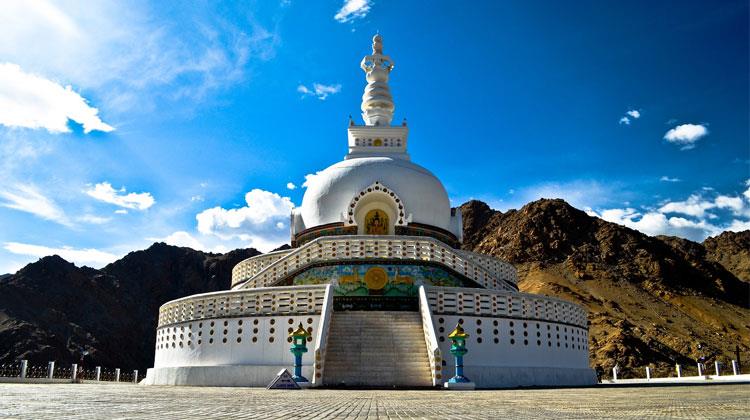
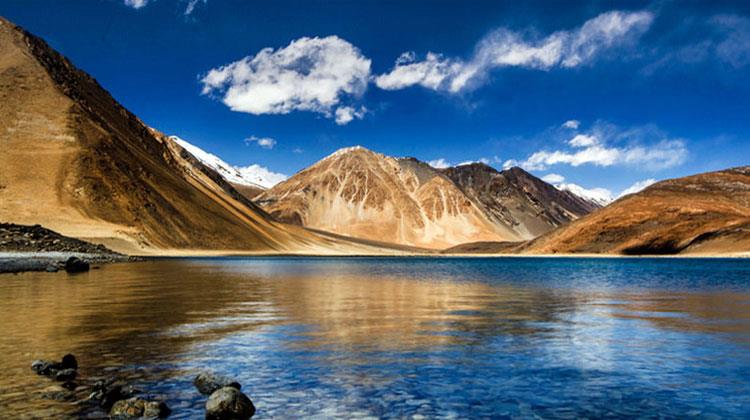
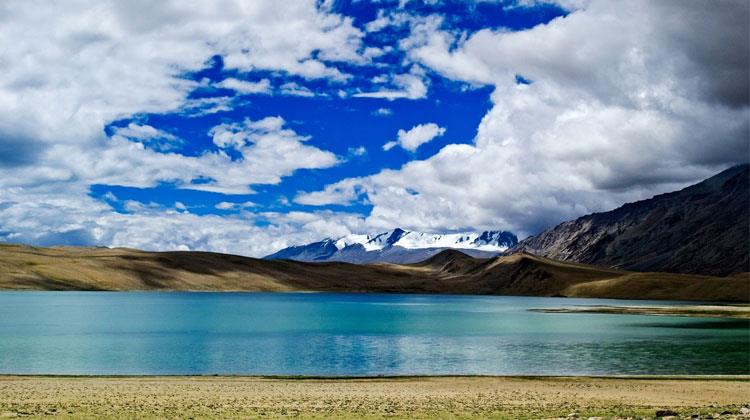
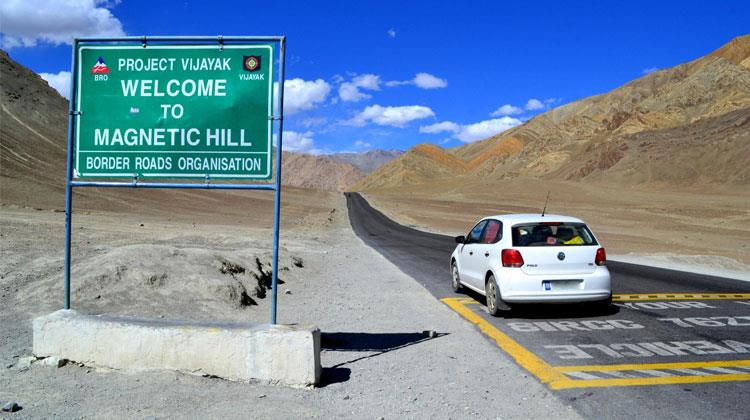
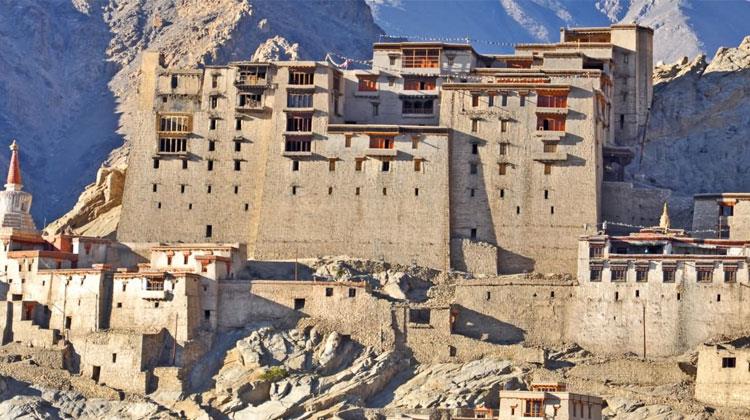
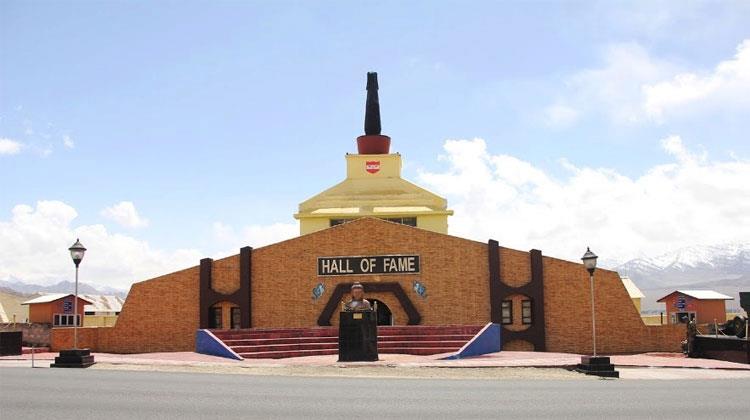
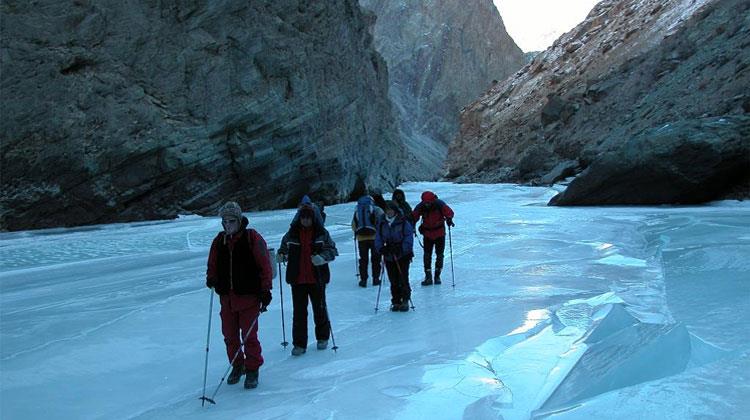
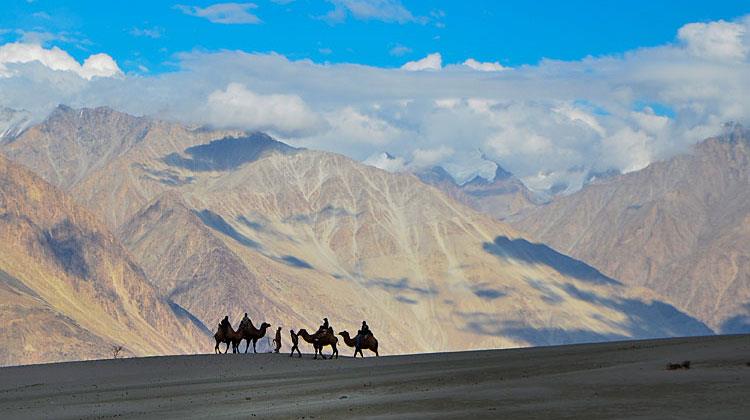

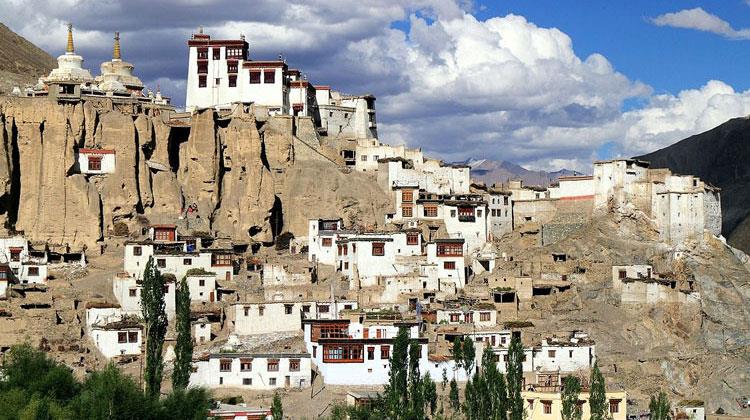
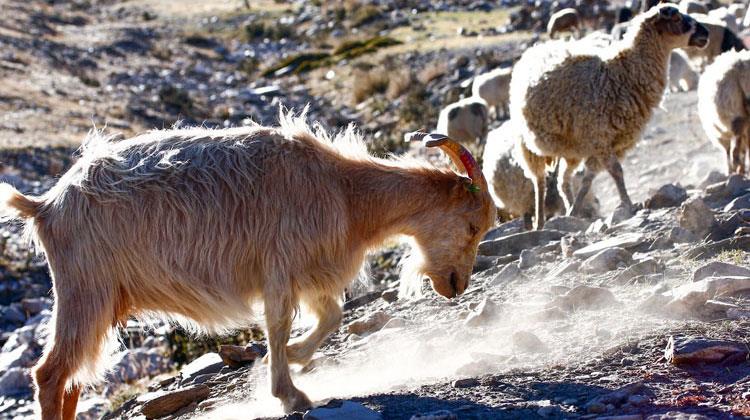


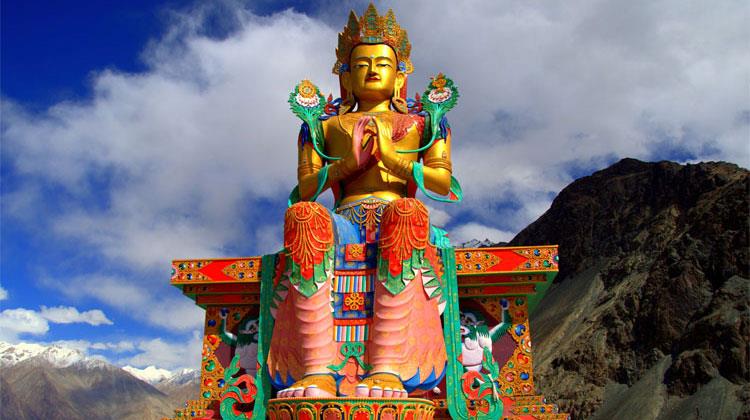
Shanti Stupa
The white dome of Shanti Stupa is clearly visible from a far distance when you are on a tour of Leh. Peace Pagoda got its name like that because of many reasons mainly the silence persists in and around the pagoda always. This Buddhist prayer center is the most beloved attraction in Jammu and Kashmir. At a height of 4267 meters, the two storied stupa stands holding its head high and overlooks the bustling Leh town.The uneven mountain terrains in the surrounding gives the pagoda a remarkable shining. It is at a location which is 5 km away from Leh town and one who visits the stupa has to climb five hundred steps. The exotic view of the Himalayan peaks turns the beauty of the stupa also, a peace lover would dedicate his life to have such overjoying moments.
Pangong Tso Lake
Pangong Tso Lake was made famous in the movie "3 Idiots", where a certain shot of the film was shot. Situated at a height of almost 14,270ft and 5km wide at its broadest point, this lake is most famous lake amongst other lakes of Leh Ladakh, is definitely a sight to behold. However, it's worth knowing that despite containing saline water, it remains frozen during the winters.This is the kind of place whose beauty can be absorbed gradually, in phases. Spend an entire day here, and you will see the waters reflect the particular time of the day. The migratory birds gliding over its waters is a lovely sight. During sunrise and sunset, the lake looks like a perfectly painted portrait.
Tso Moriri Lake
The waters of Tso Moriri shimmer under the sun and the clouds above take on curious formations. Located at an impressive latitude of almost 13,123ft, the lakes impresses visitors as much by its dimensions as by its ethereal beauty. The entire landscape here is charming and takes on a romanticized feeling.Tso Moriri Lake is also part of the Tso Moriri Wetland Conservation Reserve, and holds the distinction for being the highest Ramsar site in the world. The lake remains frozen from January to March. Although the lake lies at a distance of approximately 250km from Leh, the fabulous scenes that await you is worth it.
Tso Kar Lake
Tso Kar Lake is another of the many tourist attractions in Ladakh. It's also called the "White Lake" due to its shores being covered in salt deposits from its waters. Located at an altitude of 15,280ft, it is the smallest lake found in this region.This place is a haven for birdwatchers, while the areas surrounding it is home to rich wildlife. The various birds which visit this lake range from Brahminy duck to bar-headed geese, with the main attraction being the black-necked cranes. One of the mammals often spotted here are Kiangs, the largest of the wild asses. The area surrounding this lake is inhabited by Khampas, a nomadic tribe that lives in large tents during summers and solid stone huts during winters.
Magnetic Hill
Magnetic Hill. Situated on the Leh – Srinagar national highway, just about 27km from Leh, the hill seems to attract vehicles towards it. It's a mystery which, despite many efforts, has remained unresolved.This gravity defying phenomenon, is not limited to vehicles. Water too, is drawn towards the hill when poured on the ground. However, some say that it's merely an optical illusion caused by the particular layout of the surrounding land. Whatever the cause behind it, it's definitely a unique experience to be had.
Leh Palace
Leh Palace, also known as 'Lhachen Palkhar', catches your attention from a distance with its dun color forming a stark contrast against the light-blue skies. Built by the Buddhist kings in 1553, it once held the distinction of being the world’s highest building. It shares a striking similarity to the famous Potala Palace in Lhasa, Tibet.While the exteriors of the Leh palace provide magnificent views of the Stok Kangri and Ladakh mountain ranges, the interiors of Leh Palace are beautifully adorned with old pictures and paintings which include Tibetan thangka or sooth paintings. The inside of the Leh Palace, though, contains an exquisite collection of jewelry, crowns and ceremonial dresses.
Hall of Frame
One of the many attractions of Leh is the Hall of Fame. The structure of the museum is a sight to watch, while inside, the two large rooms showcases various aspects of Ladakhi history and culture. However, the museum mostly commemorates the Indian Army's role in Ladakh, and its various contributions to the region as a whole. Two example are, its enormous contribution during the cloudburst relief in 2010 and the battles fought with Pakistan.The museum is attached with an adventure park which consists of a baby assault course. However, if a coffee or lime soda is what you fancy, the museum comes attached with a stylish Aroma Cafe.
Zanskar Valley
Zanskar Valley endears itself to visitors with its rugged landscape, lush pastures flanked by jagged peaks and the Zanskar River, whose beauty is timeless. It’s also the most isolated of all the valleys. The Chadar trek along the frozen Zanskar River is one of the most popular adventurous sports in Ladakh.During the winters, large sections of the Zanskar River are frozen and most of the river is covered with a thick blanket of ice. This is when the Chadar Trek is undertaken along the frozen Zanskar River, a journey filed with unending surprises and adventure. The entire stretch of the trek takes you past villages, canyons and gorges. The trek is challenging as ever, but the entire experience is worth it.
Nubra Valley
Nubra Valley situated 150km north of Leh, is one of the most interesting place to visit in Leh Ladakh. Lying 150km north of Leh, its landscape is both breathtaking and surreal. This place is home to famous monasteries like Diskit and Samstanling, besides offering unique experiences like a camel safari in Hunder Sand Dunes on camels with two humps.The villages of Dah and Hanu are situated on the meeting points of the Indus and Shyok Rivers and inhabited by people belonging to the Drokpa community. Their physical features set them apart from the rest of the Ladakhi people, as they possess an Indo-Aryan look. Visiting their villages and understanding their lifestyle is an exciting and educative experience. The people here practice horticulture and grow apples and apricot which possess a taste that can’t be found anywhere else.
The beauty of Panamik village needs to be seen to be believed. Most famous for its hot water springs, the village is overlooked by snow-clad peaks and a craggy landscape. However, once here, you should take a dip in the hot springs, as the waters are believed to possess healing properties.
Hemis Monastery
Beautifully adorned, Hemis Monastery is a Tibetan monastery belonging to the Drukpa Lineage. Counted as one of the iconic monasteries in Ladakh, Hemis is perched on a mountain along the west bank of Indus River. People eagerly await to marvel at the numerous paintings or Thangkas that are carefully preserved here and are displayed on the famous Hemis Festival. A visit to the Hemis Monastery is one of the highlights of planning holidays in Ladakh.The ancient Hemis monastery is said to be have existed before the 11th century. Naropa, the teacher of the translator Marpa and the pupil of the yogi Tilopa, are regarded as the founding fathers of the Kagyu-lineage of Buddhism, with, Hemis is its main seat. The first incarnation of Stagsang Raspa Nawang Gyatso founded the monastery in 1630 when he was invited to Ladakh by the King Singay Namgyal.
Lamayuru Monastery
Lamayuru is a Moonland, and that term is hardly an exaggeration. A small village in Ladakh located midway between Kargil and Leh, the landscape of Lamayuru would have you believe that you had landed on the moon. Various houses are perched precariously on the rugged landscape and are quite a sight to watch from atop. The best way to get an incredible view of the village here is to climb the famously known "meditation hill".The Lamayuru Monastery is one of the oldest monasteries in the region, and fascinates visitors with its murals, Mani stones and the prayer wheels, which have existed since a long time. It is the prayer hall in the monastery which is generally accessible to the travelers. The monastery can be visited during both summers and winters. However, visiting it during the winters is a special treat in itself.
Changthang Wildlife Sanctuary
Changthang Wildlife Sanctuary is the only area that represents India's "Trans Himalayan Area". Due to the rugged landscape and the sparse vegetation prevailing here, the wildlife too has undergone a tremendous change due to the adaptation process. Situated at an altitude of almost 14,846ft above sea level, it spreads across an area of almost 4,000sq. Km and consists of plateaus and high altitude water lakes.One of the major attractions of Changthang Wildlife Sanctuary is the Kiang, or the Tibetan wild ass, along with the rare blacked-necked crane. The other forms of wildlife found are Tibetan argali, Tibetan wolf, Tibetan gazelle and wild yak.
Hemis National Park
Hemis National Park, also known as Hemis High Altitude National Park, holds the distinction of being the only national park in India north of the Himalayas. It’s renowned for being home to the highest density of snow leopards in the world. It is also the highest national park in India.Apart from the snow leopard, the other animals found here are the Eurasian brown bear, the Tibetan wolf and the red fox, among others. The avian population here includes several Himalayan and trans-Himalayan birds of prey including the golden eagle, the lammergeyer vulture and the Himalayan Griffon Vulture.
Pathar Sahib Gurudwara
Pathar Sahib Gurudwara, located at a height of 12,000ft, is associated with an interesting history. This Gurudwara is visited by Sikhs as well as by Tibetan Buddhists, who consider Guru Nanak to be a Buddhist saint under the name of Guru Gompka Maharaj.Its believed that, between 1515-18, when Guru Nanak was returning to Punjab after having travelled Sikkim, he rested here for a while. The imprint of the body of Guru Nanak as well as the footprint of the demon, whom Guru Nanak is believed to have transformed with its spiritual power, is on display. You may have visited various gurudwaras, but a visit to this one promises to be quite special.
Matho Monastery
Located around 26 kilometers away from Leh, on the picturesque Indus Valley, Matho Monastery is a Tibetan Buddhist monastery built under the Saskya Monastic Establishment.Matho Monastery was constructed around 500 years ago. It was established by Lama Dugpa Dorje in 1410, who belongs to Sakya order. It houses a marvelous collection of ancient Thangas and known for its Matho Nagrang Festival. It is an annual festival which takes place in the first half of March. It is a nice place where you can understand Buddhist teachings and philosophies. The nearby attraction of this place is Stakna Gompa.
Diskit Monastery
Diskit Monastery, also known as Deskit monastery is not only the oldest but also the largest Buddhist Gompa in the Nubra Valley, Ladakh. The prayer hall of the monastery consists of a statue of Maitreya Buddha, various images of other guardian gods as well as huge drum. This monastery is of the Gelugpa sect (Yellow Hat) of Tibetan Buddhism, founded by Changzem Tserab Zangpo, a disciple of Tsong Khapa, founder of Gelugpa, during the 14th century. The monastery’s cupola is same as the Tashilhunpo Monastery of Tibet.Every year this monastery plays host to the popular Dosmoche festival, held during the month of February, which is a famous tourist attraction.
Great Trip with Great Company
